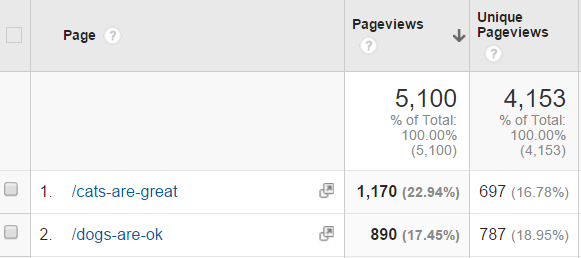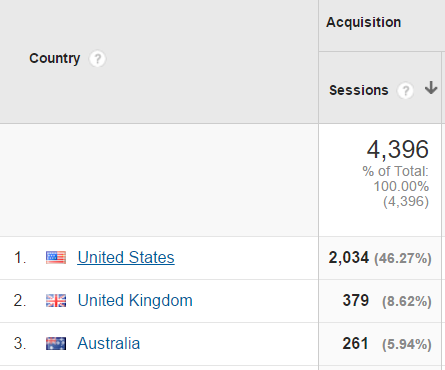A List of the Most Misunderstood Google Analytics Terms
Loves Data
If you’re new to the world of digital analytics (and, by the way, welcome to the ride of your life!) and are just getting to grips with Google Analytics, then we wouldn’t blame you for getting a little confused by all the new terminology that you’re coming across. Sessions, bounces, unique pageviews – what do they all mean? It must seem like learning a foreign language – and, in a way, it is. Let us help you with this glossary of some common and easily misunderstood Google Analytics terms.
Bounce/bounce rate
A session with just a single pageview (or other hit) is recorded in Google Analytics as a bounce, and the bounce rate is the fraction of sessions which were bounces. The name recalls the image of a user reaching your site, deciding it’s not what they want and ‘bouncing’ back to Google or wherever else they came from. A high bounce rate may make you question how effective your landing pages are but not all bounces are like that: a bounce could just mean that a user found what they were looking for on the first page, and for some sites that is a measure of success. As ever, the metric is the message not the meaning.
Goal completion/conversion rate
One of the beauties about Google Analytics is the ability to define customised goals that you want your website visitors to achieve, whether viewing a particular page, watching your latest embedded video or filling in your enquiry form (read our previous post on goals for help getting them set up). Helpfully, Google Analytics makes the count of completions of each goal available for reporting but you need to be aware of a little caveat. Suppose you have a ‘download pdf’ goal and someone comes to your site and downloads two pdfs – two goal completions, right? Wrong! Google Analytics says that, in any session, the goal is either completed or not, so it will actually only show one goal completion.
Goal conversion rate is just the proportion of sessions in which a particular goal was completed. One more caveat here: the all-goals completion figure is the total number of individual goal completions, and the all-goals conversion rate is just total goals divided by number of sessions. Because someone can complete more than one different goal in a session, that means you can easily end up with an all-goals conversion rate that is over 100%, which may not be intuitive. Look at this example: the ‘Goal Conversion Rate’ of 4.59% doesn’t mean that 4.59% of sessions had a goal completed!

Landing page
The first page viewed by a user during a session. These are the pages that your users are first seeing on visiting your site, so you want them to perform well.
Pageview/Unique Pageview
Pageviews simply record the number of times a page was viewed. Unique pageviews are similar but can only clock up a tally once per session. If a user visits the ‘/cats-are-great page’ on your website, that adds one to the pageview tally for that page and one to the unique pageview tally. The user then visits ‘/dogs-are-ok’ and similarly that’s one pageview and one unique pageview. They return to the ‘/cats-are-great’ page and that’s another pageview, making a total of two for that page and three for all pages, but nothing added to the unique pageview count because that page has already been viewed. Pull a report broken down by page and your unique pageview count shows the number of sessions in which each page was viewed at least once.

Session
Simple in concept but surprisingly complicated when you start digging! Basically, a session is all the pageviews and other activity recorded for a single ‘visit’ to your website. One session could include just one pageview (if someone came to your site, viewed a page and then left) or many of pageviews (if someone came to your site and spent some time browsing around lots of pages) along with custom events, ecommerce data and other data that you can arrange to send to Google Analytics.
The exact definition of a single session is somewhat arbitrary. For instance, if someone visits one page on your site and a day later visits another page, you probably think of that as two different sessions, but what if the two visits are only an hour apart? What if someone visits your site from a Google search and then visits ten minutes later by typing your URL directly into their browser – one session or two? Google Analytics has some built-in rules that it uses to decide how to break sessions and if you really want to you can even customise some of the rules for your own site.

User
A proxy for how many different humans (or non-humans, for that matter) visited your site. In practice, unless you go to the effort of identifying real humans to Google Analytics (for instance, if they log in and you deliberately pass their id to Google Analytics using the special ‘User ID’ feature), it can really only distinguish a unique computer/web-browser because it uses a first party web cookie to track users across sessions, so that is what is really being measured as users.
What next?
There’s more to getting the best out of Google Analytics than just knowing the terminology. See out our checklist for getting set up with the tool and take things to the next level.
